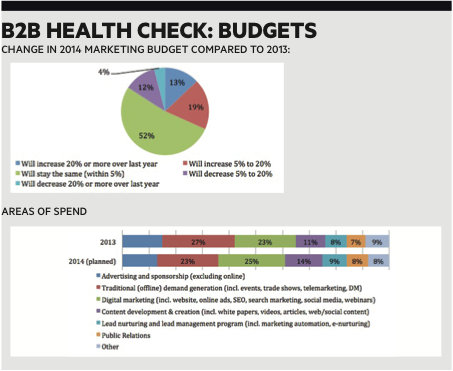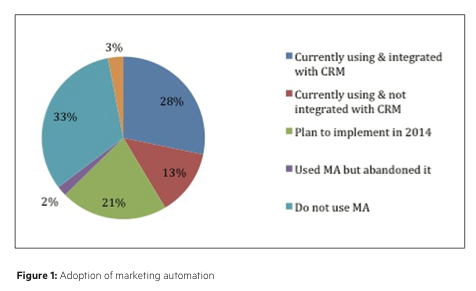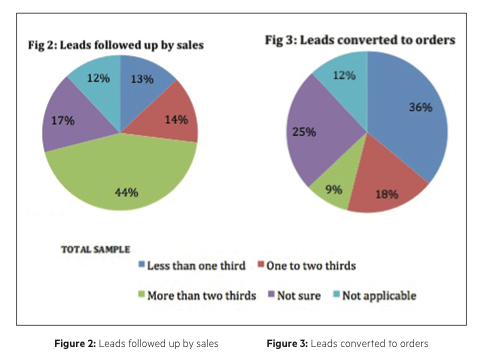One on one: The road to the holy marketing grail
Share
Now in its fourth year, the annual ‘B2B Marketing Outlook’ report for 2014 shows that personalising every buyer touch point to achieve the fabled ‘one-to-one’ relationship is proving a challenge for Australia’s business-to-business marketers.
In the digital-dominated B2B sales cycle, highly personalised ‘human-to-human’ marketing is becoming a lofty yet attainable goal for marketers. The empowered buyer is in control of an increasing portion of the sales cycles, fuelling a mandate for a consistent stream of content relevant to different buyers at different stages of the journey.
However, as Green Hat, ADMA and Marketing‘s annual study of the Australian B2B marketing space reveals, establishing the various elements required to personalise buyer touch points is proving a challenge for the industry.
The market has accepted it lives in an inbound world. Digital marketing is now the leading area of spend, having overtaken traditional offline methods for the first time. Content is seen as the key to success in 2014 by 70% of the 414 who participated in the ‘B2B Marketing Outlook’ study. And in response to this digital domination of the sales funnel, adoption of marketing automation has jumped, with 41% of the sample having implemented some form of automation and another 20% planning to in the near future.
Despite the progress achieved, the ‘holy grail’ of one-to-one is still a long way off for the majority of marketers. Challenges linking marketing automation with other business systems, keeping the content stream flowing, linking sales and marketing and understanding automation are holding the market back.
Relevance, not content, is king
With the buyer in control of an increasing portion of the sales cycle, marketers face the task of serving content relevant to more stages of the decision funnel. According to data from advisory firm Corporate Executive Board, 60% of the purchase decision in B2B is made before reaching out to sales. Across a long and complicated purchase cycle, this poses significant challenges. Traditionally, marketing has been comfortable operating at the top of the funnel, believes Chris Fell, managing director of inbound marketing specialist company g2m Solutions. “We are now in the era of the buyer,” Fell says. “They have the power in the awareness, consideration and middle-of- the-funnel stages as well. Salespeople are being pushed further and further down decision-making paths.”
This shift elevates the importance of tailoring content to different audiences at different stages of the buying cycle, complicating the task of content distribution. All of a sudden, multiple forms of content are required to engage buyers depending on their stage in the cycle.
Spruiking content to build thought leadership isn’t enough anymore, adds CMO and partner of Deloitte, David Redhill. Content has to woo buyers and enhance their capacity to act. “B2Bs are recognising you have to court consumers. You have to get them into a dialogue… get beyond being in the consideration set and into the role of provoking thought, reaction, positioning strategies and approaches to solving problems. Encourage a target to want to get into a conversation with you because they feel that they can’t afford not to have a conversation with you.”
Automating for distribution success
The majority of B2B marketers are on board with content and inbound marketing, but distributing content according to reader profile and stage of sales cycle is a layer of complexity most are yet to reach. The smart ones are building a complete view of the buyer’s journey and decision-making phases, and mapping content and tactics to get the right information in front of readers at the right time.
Achieving this Utopia of one-to-one marketing needs a fully connected picture of the sales funnel, something only possible for most companies when marketing automation is integrated with the company’s other data sets. Green Hat’s study shows that while 41% have some form of marketing automation in place, only 28% have connected it to their CRM (customer relationship management) system. This statistic looks worse among smaller businesses than large – 76% with a turnover of $50 million per annum or less are yet to adopt or integrate marketing automation with CRM, while 64% of businesses over $50 million in revenue are yet to take the step.
Even that sounds high to managing director at Green Hat, Andrew Haussegger. “Anecdotally, 28 percent sounds high… integrating into CRM takes a lot of work and I don’t believe that many have got it running in their organisations.” Understanding how automation systems work and proficiency with their use is a key barrier, Haussegger adds. “It’s a little bit like the old CRM days… marketing automation software companies are aggressively selling their software platforms. They come in and implement it and run a few campaigns, then leave marketers to it.” Pressed for time, marketers often fall back to using the tools as simple email broadcasters and fail to build out and plan integration with CRM systems and sales.
B2B marketing consultant Kimon Lycos echoes Haussegger’s sentiments: “It’s like buying a baby crocodile and not realising it will turn into a 10-metre long beast. Marketers aren’t prepared for the amount of content needed to make automation systems relevant, nor the man hours required to run them.”
Cost is also a stumbling block to company-wide automation, Lycos adds. “If you were to get an end- to-end system through someone like Oracle or SAP, it’s going to cost you an absolute bomb. Marketers are avoiding that fight and taking on something like HubSpot that does enough, or pushing for something like Eloqua.”
Automation is not a switch you suddenly turn on, Redhill says. “Everyone has identified the market of one and the rapid feedback loop is their ‘holy grail’ in tailoring the product and the offer around the needs of the individual,” he says. But the nature of B2Bs as organisations that are often siloed limits their agility, he believes, adding some smaller businesses are getting to the stage of one-to-one, but no big brands have yet managed to truly put the customer at the centre of everything they do. “It’s very difficult to contemplate moving a massive business lock, stock and barrel into an automated marketing process.”
These challenges are reflected in the survey’s findings around return on investment (ROI) for automation. The largest group (42%) rate ROI as satisfactory, while 39% are unsure or yet to achieve a return. Of the benefits listed from automation implemented, 25% quote improvements to lead nurturing and management, 22% improved engagement with target market and 20% improved marketing productivity.
Closing the loop between marketing and sales
In many ways the difficulties connecting marketing automation systems to CRM systems reflect the age-old disconnect between marketing and sales. This again emerged as an issue in the research, particularly among larger organisations. Overall, 44% of marketers saw more than two-thirds of leads followed up by sales. However, among businesses over $50 million in revenue, only 26% saw more than two-thirds followed up, while 22% were unsure how many leads were followed up and 38% saw less than two-thirds followed up. Conversion in large businesses is also far below that of their smaller counterparts, with only 13% converting more than one-third of leads, compared to 34% among business with revenue below $50 million.
These findings come despite the fact that marketers resoundingly nominate lead generation and nurturing as their top priorities – rated significant by 79% and 74% of the sample respectively. Integrating marketing with sales registered as the fifth priority for marketers, with 52% rating it significant. “Generating and nurturing leads are clearly the most significant objectives, but there’s a dichotomy,” Haussegger points out. By placing a lesser emphasis on integrating with sales, marketers are failing to address the breaking point further down the line. Automation may be a tool that can help connect the two, but the absence of well-defined, jointly-developed processes among many businesses requires attention before the disconnect can be corrected.
Sales and marketing need to sit down and develop a jointly defined lead life cycle management process, integrate marketing automation and CRM platforms to support the agreed process, create jointly defined KPIs, and conduct systematic reviews, according to Haussegger. Redhill sees the problem as a cultural one.
Traditionally, more sales led B2Bs need to push marketing up the ladder and align it more closely with business strategy. “At the executive level the roles of sales and marketing have to be clarified in terms of strategic priorities by the leaders of the business,” Redhill believes.
Taking marketing, and automation, into the boardroom
Automation is also the path to the boardroom for marketers, Fell says. “Marketing can demonstrate its value to the business in a much more explicit, measurable way through data than it’s been able to in the past… putting it in a much more powerful position in the organisation than it has been before.” With the need to demonstrate ROI ever increasing – the fourth most significant objective for marketers for the year ahead – fully connected automation allows marketers to measure, not just individual tactics, but how they link together and connect to revenue.
Tackling the automation challenge company- wide is a long way off for many. It asks for complete reorientation of company strategy around the customer – a huge investment and shift for big businesses, and no mean feat for their smaller, more agile peers. Budgets may be expected to improve, but allocating funds is akin to spreading butter – thin coverage across the mix, with enough left over for where it really counts. Automation can help marketers do more with less, freeing up staff from process- oriented tasks to focus on the bigger picture, but the initial outlay in time and cost to get automation off the ground can be overwhelming. Those prepared to bite the bullet, however, stand to move themselves towards the ‘holy grail’ of one-to-one marketing, greater efficiency in the future and a seat in the boardroom.


















